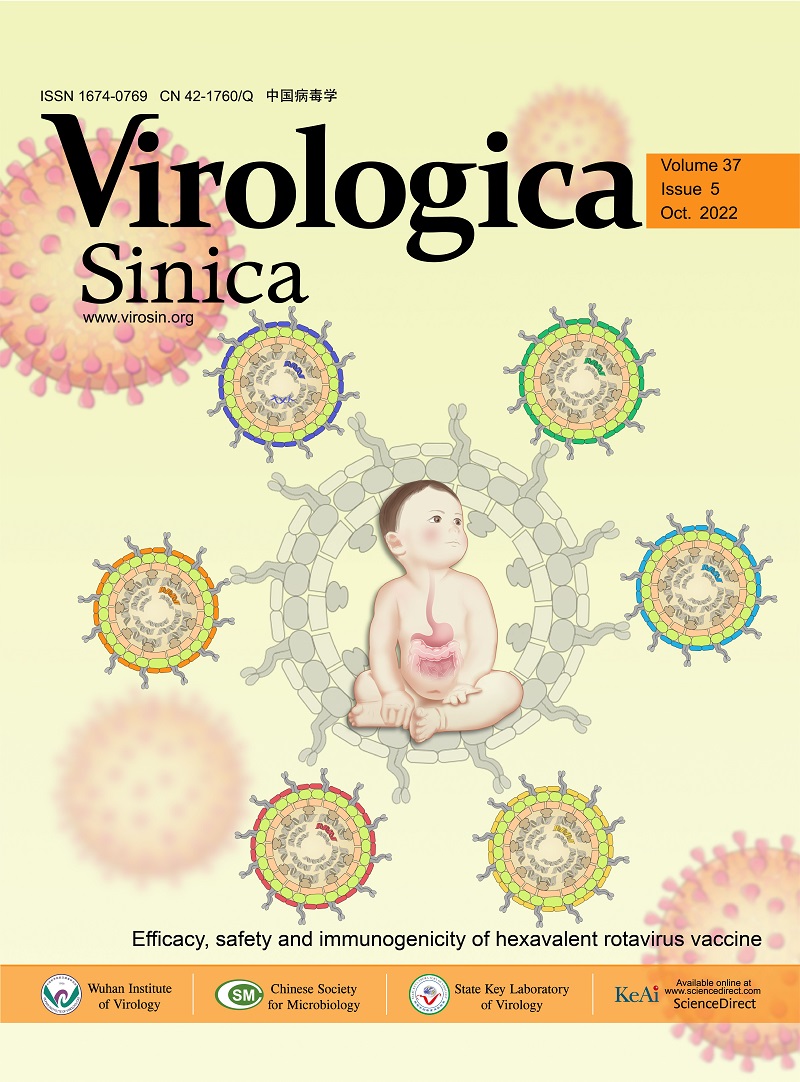-
Bamford, D.H., Zuckerman, M., 2021. Encyclopedia of Virology, fouth ed. Elsevier Ltd., Amsterdam, pp. 362-372.
-
Britt, Hornei, R.K, Pierre, Moubayed, Werner, Frings, Verena, Gauss, Müller, Andreas, Dotzauer, 2001. Experimental hepatitis A virus infection in Guinea pigs.J. Med. Virol. 64, 402.
-
Chitambar, S.D., Joshi, M.S., Sreenivasan, M.A., Arankalle, V.A., 2001. Fecal shedding of hepatitis A virus in Indian patients with hepatitis A and in experimentally infected Rhesus monkey. Hepatol. Res. 19, 237-246.
-
Drexler, J.F., Corman, V.M., Lukashev, A.N., van den Brand, J.M., Gmyl, A.P., Brünink, S., Rasche, A., Seggewiβ, N., Feng, H., Leijten, L.M., 2015. Evolutionary origins of hepatitis A virus in small mammals. Proc. Natl. Acad. Sci. USA 112, 15190-15195.
-
Guidotti, L.G., Chisari, Fv, Murray, J.M., Purcell, R.H., Wieland, S.F., 2019.Immunobiology and pathogenesis of viral hepatitis. Annu. Rev. Pathol. 1, 23-61.
-
Hirai-Yuki, A., Hensley, L., Mcgivern, D.R., González-López, O., Das, A., Hui, F., Lu, S., Wilson, J.E., Hu, F., Feng, Z., 2016a. MAVS-dependent host species range and pathogenicity of human hepatitis A virus. Science 353, 1541-1545.
-
Hirai-Yuki, A., Hensley, L., Whitmire, J.K., Lemon, S.M., 2016b. Biliary secretion of quasienveloped human hepatitis A virus. mBio 7, e01998, 01916.
-
Huang, X., Lian, Y., Wang, Q., 1997. Experimental in vivo passage of H2 strain of live attenuated vaccine of hepatitis A in common marmosets. Chin. J. Prev. Med. 31, 260.
-
Karayiannis, P., Jowett, T., Enticott, M., Moore, D., Thomas, H.C., 2010. Hepatitis A virus replication in tamarins and host immune response in relation to pathogenesis of liver cell damage. J. Med. Virol. 18, 261-276.
-
Lanford, R.E., Feng, Z., Chavez, D., Guerra, B., Brasky, K.M., Zhou, Y., Yamane, R., Perelson, A.S., Walker, C.M., Lemon, S.M., 2011. Acute hepatitis A virus infection is associated with a limited type I interferon response and persistence of intrahepatic viral RNA. Proc. Natl. Acad. Sci. U.S.A. 108, 11223-11228.
-
Lemon, S.M., Murphy, P.C., Provost, P.J., Ira, C., Davide, J.P., Schofield, T.L., Nalin, D.R., Lewis, J.A., 1997. Immunoprecipitation and virus neutralization assays demonstrate qualitative differences between protective antibody responses to inactivated hepatitis A vaccine and passive immunization with immune globulin. J. Infect. Dis. 9-19.
-
Li, S.H., Dong, H., Li, X.F., Xie, X., Zhao, H., Deng, Y.Q., Wang, X.Y., Ye, Q., Zhu, S.Y., Wang, H.J., Zhang, B., Leng, Q.B., Zuest, R., Qin, E.D., Qin, C.F., Shi, P.Y., 2013.Rational design of a flavivirus vaccine by abolishing viral RNA 2'-0 methylation.J. Virol. 87, 5812-5819.
-
Luo, J., Wang, X., Ma, F., Kang, G., Ding, Z., Ye, C., Pan, Y., Zhao, Y., Hong, S., Chen, J., 2019. Long-term immunogenicity and immune persistence of live attenuated and inactivated hepatitis a vaccines:a report on additional observations from a phase IV study-ScienceDirect. Clin. Microbiol. Infect. 25, 1422-1427.
-
Mao, J.S., Dong, D.X., Zhang, H.Y., Chen, N.L., Zhang, X.Y., Huang, H.Y., Xie, R.Y., Zhou, T.J., Wan, Z.J., Wang, Y.Z., 1989. Primary study of attenuated live hepatitis A vaccine (H2 strain) in humans. J. Infect. Dis. 621-624.
-
Mao, J.S., Xie, R.Y., Huang, H.Y., Chai, S.A., Dong, D.X., 1988. Studies in monkeys of attenuated hepatitis A variants. Singapore Bus. 31, 338-343.
-
Mao, J.S., Go, Y.Y., Huang, H.Y., Yu, P.H., Huang, B.Z., Ding, Z.S., Chen, N.L., Yu, J.H., Xie, R.Y., 1981. Susceptibility of monkeys to human hepatitis A virus. J. Infect. Dis. 55-60.
-
Misumi, I., Mitchell, J.E., Lund, M.M., Cullen, J.M., Lemon, S.M., Whitmire, J.K., 2021.T cells protect against hepatitis A virus infection and limit infection-induced liver injury. J. Hepatol. 75, 1323-1334.
-
Oluwafemi, B., Ashley, B., Angelo, D., Hochberg, N.S., Barnett, E.D., Ambra, N.L., Hilmir, A., Grobusch, M.P., Karin, L., Fernando, S., 2022. Acute hepatitis a in international Travelers:a GeoSentinel analysis, 2008-2020. J. Trav. Med. 29taac013.
-
Purcell, R.H., Emerson, S.U., 2001. Animal models of hepatitis A and E. I. L. AR (Anticancer Res.) J. 42, 161-177.
-
Rao, S., Mao, J.S., Motlekar, S., Fangcheng, Z., Kadhe, G., 2016. A review of immunogenicity and tolerability of live attenuated Hepatitis A vaccine in children.Hum. Vaccine 23, 3160-3165.
-
Robertson, B.H., D'Hondt, E.H., Spelbring, J., Tian, H., Margolis, H.S., 1994. Effect of postexposure vaccination in a chimpanzee model of hepatitis A virus infection.J. Med. Virol. 43, 249-251.
-
Shah, N., Faridi, M., Mitra, M., Bavdekar, A., Jain, R., 2020. Review of long term immunogenicity and tolerability of live hepatitis A vaccine. Hum. Vaccines Immunother. 1-6.
-
Sun, L., Li, Y., Misumi, I., González-López, O., Hensley, L., Cullen, J.M., McGivern, D.R., Matsuda, M., Suzuki, R., Sen, G.C., Hirai-Yuki, A., Whitmire, J.K., Lemon, S.M., 2021.IRF3-mediated pathogenicity in a murine model of human hepatitis A. PLoS. Pathog. 17, e1009960.
-
Yin, S., Laurie, B.,K.N., Greta, K., Foster, M.A., Jan, D., Jiles, R.B., 2020. Susceptibility to hepatitis A virus infection in the United States, 2007-2016. Clin. Infect. Dis. 71, e571-e579.
-
Zhuang, F.C., Wang, X.Y., Chen, M.D., Jiang, L.M., Wu, J., Jiang, Q., Gong, Y.P., Qian, W., Xin, Y.J., Mao, J.S., 2012. Era of vaccination heralds a decline in incidence of hepatitis A in high-risk groups in China. Hepat. Mon 12, 100-105.
















 DownLoad:
DownLoad: